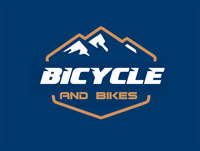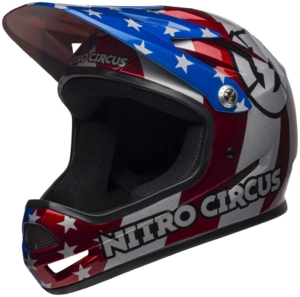Buying a BMX Helmet
All the Things You Need to Consider…
When Buying a BMX Helmet Safety Should Be Your Most Important Consideration..
So, you are considering buying a BMX helmet?
When it comes to BMX riding, safety should always be a top priority.
One of the most crucial pieces of safety gear for any BMX enthusiast is a high-quality helmet. BMX helmets are specifically designed to provide maximum protection during the high-flying and daring maneuvers that BMX riders perform.
However, not all BMX helmets are the same, and choosing the right one requires careful consideration.
In this comprehensive guide, we’ll explore all the essential factors you need to consider when buying a BMX helmet to ensure you make a well-informed and safe choice.
Safety-Standards-Certifications
Helmet-Type
Fit-Comfort
Ventilation
Impact-Absorption-And-Materials
Visors-And-Face-Shields
Style-And-Aesthetics
Helmet-Weight
Price-And-Budget
Reviews-And-Recommendations
Best-Brand-Manufacturers
Safety Standards and Certifications
Any BMX helmet you buy must comply with safety standards like CPSC, ASTM F1492, EN 1078, and AS/NZS 2063.
Some may also have Snell B-95 or N-94 certifications.
These standards ensure helmets meet safety requirements for BMX riding and extreme sports.
Look for relevant certification stickers when choosing your BMX helmet. Seriously, it’s important!
Helmet Type
Full-Face or Open-Face
When buying a BMX helmet, consider whether you prefer a full-face or open-face style.
Full-Face BMX Helmet
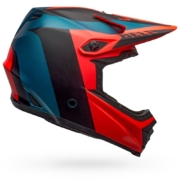
- Provides complete head protection, including the chin and face.
- Ideal for aggressive BMX disciplines like racing, dirt jumping, and freestyle riding.
- Offers superior protection during high-speed crashes and challenging stunts.
Open-Face BMX Helmet
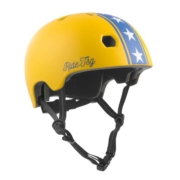
- Covers the top, back, and sides of the head, leaving the face exposed.
- Suitable for casual riding, bike park sessions, and less aggressive BMX activities.
- Provides excellent ventilation and is lightweight for comfort during longer rides.
When buying a BMX helmet, hink about your riding style and the level of protection you need.
If you’re into high-risk BMX disciplines, a full-face helmet is the way to go.
On the other hand, if you want a balance between protection and comfort, go for an open-face helmet.
Remember, your safety is crucial, so choose the helmet that suits your needs and keeps you well-protected during your BMX adventures!
Fit and Comfort
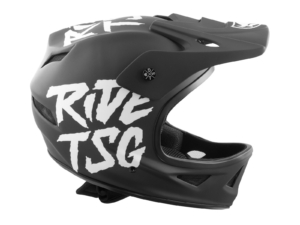 Fit and comfort are crucial factors to consider when choosing a bicycle helmet. Here’s why they matter:
Fit and comfort are crucial factors to consider when choosing a bicycle helmet. Here’s why they matter:
Fit:
- A properly fitting helmet is essential for optimal protection. It should sit level on your head, covering your forehead and not tilted backward or forward.
- The helmet’s straps should form a “V” shape under your ears, and the chin strap should be snug but not overly tight.
- To check the fit, shake your head gently after fastening the straps. The helmet should stay securely in place without wobbling.
Comfort:
- Comfortable helmets encourage regular use. If your helmet is uncomfortable, you may be tempted to skip wearing it, compromising your safety.
- Look for helmets with padding and a comfortable inner lining that cushions your head and wicks away sweat.
- Ventilation is essential to keep your head cool during rides. Helmets with sufficient vents allow air to circulate, preventing overheating.
Remember, every head is different, so try on various helmet models to find the one that fits snugly and feels comfortable.
A well-fitted and comfortable helmet will ensure you stay protected and enjoy your cycling adventures to the fullest.
Ventilation
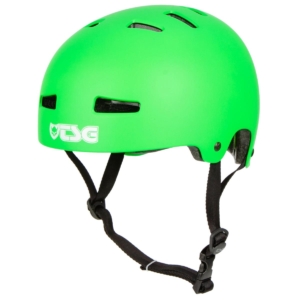 Ventilation is a crucial aspect of a bicycle helmet that affects your comfort during rides.
Ventilation is a crucial aspect of a bicycle helmet that affects your comfort during rides.
Here’s why ventilation matters:
Airflow:
- Helmets with proper ventilation allow cool air to flow in and hot air to escape, preventing your head from getting overly sweaty and uncomfortable.
- Good airflow helps regulate your body temperature, keeping you cooler during warm weather rides.
Sweat Management:
- Sweating is natural during physical activities like cycling, and a well-ventilated helmet helps manage sweat effectively.
- Helmets with moisture-wicking pads or liners absorb sweat, preventing it from dripping into your eyes or making the helmet feel damp.
Longer Rides:
- Ventilation becomes even more critical during longer rides or intense cycling sessions when your body generates more heat.
- Proper airflow prevents overheating and discomfort, allowing you to focus on enjoying your ride.
Safety Considerations:
- Some riders may worry that ventilation compromises safety, but modern helmet designs maintain safety standards while providing ample airflow.
When buying a BMX helmet, consider the number and placement of vents.
Helmets with multiple vents strategically placed to enhance airflow are an excellent choice, especially for warm climates or vigorous rides.
Ventilation ensures that your helmet remains comfortable and functional, enhancing your overall cycling experience.
Impact Absorption and Materials
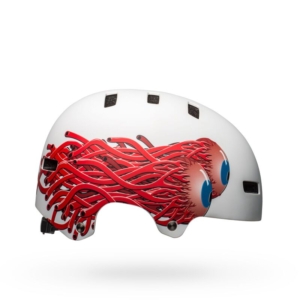 Understanding impact absorption and helmet materials is crucial for selecting a helmet that offers reliable protection.
Understanding impact absorption and helmet materials is crucial for selecting a helmet that offers reliable protection.
Here’s why they matter:
Impact Absorption:
- A helmet’s primary function is to absorb and dissipate the force of an impact, reducing the risk of head injuries during crashes or falls.
- Helmets with effective impact absorption help protect your head and brain from serious injuries, such as concussions.
Helmet Materials:
- Helmet shells are typically made from durable materials like ABS plastic, polycarbonate, or composite materials like fiberglass or carbon fiber.
- These materials provide strength and impact resistance to withstand crashes and protect your head.
Inner Liners:
- Helmets have inner liners made of expanded polystyrene (EPS) foam, which is designed to absorb and disperse the energy of an impact.
- EPS foam is lightweight and offers excellent impact absorption properties.
Multi-Density Foam:
- Some helmets feature multi-density foam, where different parts of the liner have varying levels of stiffness. This design helps optimize impact absorption across different impact scenarios.
MIPS Technology:
- Some helmets incorporate MIPS (Multi-Directional Impact Protection System) technology, a slip-plane design that reduces rotational forces during angled impacts, further enhancing protection.
Certifications:
- Look for helmets that meet recognized safety certifications like CPSC, ASTM, EN, or Snell. These certifications ensure the helmet has undergone rigorous testing and meets safety standards.
Remember, a high-quality helmet with effective impact absorption and durable materials is essential for your safety while cycling.
Invest in a helmet that meets safety standards and provides the protection you need during your rides.
Your head and brain’s safety should always be a top priority!
Visors and Face Shields
Visors and face shields are additional features found in some bicycle helmets, offering added functionality and protection.
Here’s why they are beneficial:
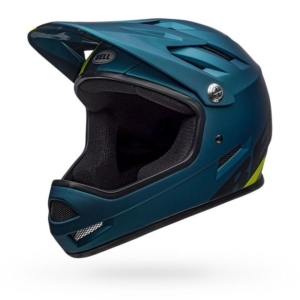 Visors:
Visors:
- Visors are small extensions on the front of the helmet, designed to shield your eyes from sun glare, rain, and debris.
- They improve visibility during bright or challenging light conditions, allowing you to focus on the road or trail ahead.
- Visors also provide protection from low-hanging branches and flying debris during off-road rides.
Adjustability:
- Many visors are adjustable, allowing you to tilt them up or down based on the angle of the sun or your riding position.
Removability:
- Some helmets come with removable visors, providing the flexibility to customize your helmet for different riding conditions.
Face Shields:
- Face shields are found in full-face helmets and offer additional protection for the face and eyes during aggressive riding.
- They provide coverage from mud, dust, and other trail debris, enhancing safety during off-road adventures.
Ventilation:
- Some face shields have ventilation slots to prevent fogging and maintain airflow for better comfort during intense rides.
MIPS with Face Shields:
- Some full-face helmets with face shields also integrate MIPS technology to enhance protection against rotational forces during impacts.
Remember, visors and face shields are optional features, and not all helmets include them.
Depending on your riding style and preferences, a buying a BMX helmet with a visor or face shield can provide valuable benefits, enhancing your riding experience and safety.
Buying A BMX Helmet – Style and Aesthetics
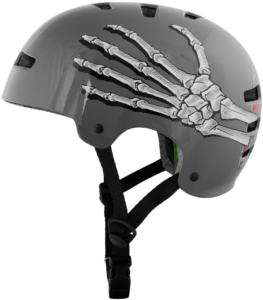 Style and aesthetics are important considerations when choosing a bicycle helmet, as they can influence how often you wear the helmet and how confident you feel during rides. Here’s why they matter:
Style and aesthetics are important considerations when choosing a bicycle helmet, as they can influence how often you wear the helmet and how confident you feel during rides. Here’s why they matter:
Personal Expression:
- Helmets come in a wide range of colors, designs, and patterns, allowing you to express your personal style and preferences.
- Choosing a helmet that aligns with your taste adds a fun and fashionable element to your cycling gear.
Matching Your Bike:
- Coordinating your helmet with your bike or cycling attire can create a cohesive and polished look, adding to the overall enjoyment of cycling.
Visibility and Safety:
- Helmets with bright colors or reflective elements improve your visibility to other road users, enhancing safety during low-light conditions or night rides.
Graphics and Logos:
- Some helmets feature graphics or logos from your favorite brands or cycling teams, showing your support and enthusiasm for the sport.
Confidence Boost:
- Wearing a stylish helmet that complements your personality can boost your confidence during rides, making you feel good about your appearance and enhancing your overall biking experience.
Comfort and Style:
- Fortunately, many helmets offer a balance between style and comfort, so you don’t have to compromise aesthetics for safety or vice versa.
Remember, while style and aesthetics are essential, safety and fit should always be the top priorities when choosing a helmet.
Look for a helmet that not only suits your fashion preferences but also provides the necessary impact protection and fits securely on your head.
Helmet Weight
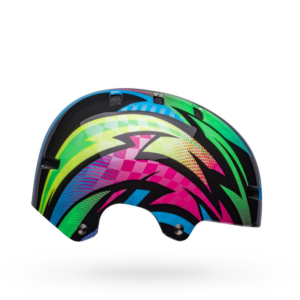 Helmet weight is a critical factor to consider when choosing a bicycle helmet, as it can significantly impact your comfort and overall riding experience. Here’s why helmet weight matters:
Helmet weight is a critical factor to consider when choosing a bicycle helmet, as it can significantly impact your comfort and overall riding experience. Here’s why helmet weight matters:
Comfort:
- Lighter helmets are generally more comfortable to wear, especially during long rides or extended periods of cycling.
- A lightweight helmet puts less strain on your neck and shoulders, allowing you to focus on the road or trail ahead.
Performance:
- A lighter helmet can enhance your cycling performance, as it reduces the extra weight on your head, enabling you to ride more efficiently and with less fatigue.
Ventilation:
- Lighter helmets often come with better ventilation systems, as they have more room for strategically placed vents to maintain airflow and keep your head cool.
Durability:
- The weight of a helmet can also be an indicator of its construction and materials used.
- High-quality materials may make a helmet lighter without compromising on impact protection or safety.
Discipline-Specific Helmets:
- Some cycling disciplines, like road racing, prioritize lightweight helmets to improve aerodynamics and performance.
- For other disciplines like mountain biking or BMX, where added protection is crucial, helmets may have a slightly higher weight due to additional features.
When choosing a helmet, consider the trade-off between weight and protection.
A lightweight helmet can enhance comfort and performance, but it’s essential to ensure it still meets safety standards and provides sufficient impact protection for your riding style.
Finding the right balance between weight and safety will result in a helmet that enhances your overall cycling experience.
Buying A BMX – Price and Budget
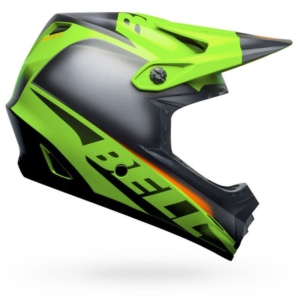 Price and budget are important factors to consider when purchasing a bicycle helmet. Here’s why they matter:
Price and budget are important factors to consider when purchasing a bicycle helmet. Here’s why they matter:
Affordability:
- Setting a budget helps you narrow down your options and find a helmet that fits within your financial means.
- Helmets come in a wide price range, so having a budget ensures you find one that meets your needs without overspending.
Safety vs. Price:
- While budget-friendly options are available, remember that the safety and quality of the helmet should never be compromised.
- Investing in a reputable helmet that meets safety certifications ensures you get the necessary protection during your rides.
Features and Technology:
- Higher-priced helmets may come with advanced features like MIPS technology, multi-density foam, or superior ventilation systems.
- Assess whether these features are essential for your riding style and budget accordingly.
Long-Term Investment:
- Consider a helmet as a long-term investment in your safety and enjoyment of cycling.
- Spending a bit more on a durable and comfortable helmet can offer better value over time compared to frequently replacing lower-quality helmets.
Sales and Discounts:
- Keep an eye out for sales, promotions, and discounts that can make higher-priced helmets more affordable.
Review and Compare:
- Take the time to read reviews and compare helmets in your price range to find one that meets your criteria.
Remember that your helmet is one of the most critical pieces of cycling gear for your safety.
While budget constraints are essential, prioritize finding a helmet that offers reliable protection and fits comfortably.
With careful consideration and research, you can find a helmet that strikes the right balance between price and safety for your cycling needs.
Buying a BMX Helmet
Reviews and Recommendations
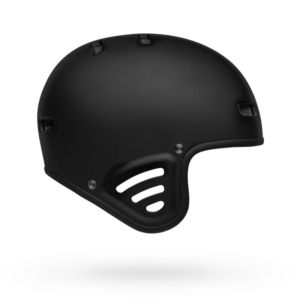
Insight from Other Users:
- Reading reviews allows you to gain insights from other cyclists who have firsthand experience with the helmet you’re considering.
- You can learn about the helmet’s comfort, fit, ventilation, and overall performance from real users.
Objective Evaluation:
- Reviews often provide an objective evaluation of a helmet’s strengths and weaknesses, helping you understand its pros and cons.
- Look for reviews from reliable sources or reputable cycling websites to ensure credibility.
Safety and Performance:
- Recommendations from fellow cyclists or experts can highlight helmets that offer superior safety features and optimal performance.
- Safety should always be a top priority, and hearing from others about their experiences can guide you towards a reliable helmet.
Comparisons:
- Reviews and recommendations allow you to compare different helmet models within your budget and riding style.
- You can make a more informed choice based on how each helmet performs in real-world scenarios.
Product Quality:
- Positive reviews and high recommendations can indicate the quality and durability of a helmet, helping you invest in a long-lasting product.
Look for reviews from cyclists who share similar riding preferences or disciplines as you.
Additionally, consider consulting with local bike shops or seeking advice from experienced riders to gather valuable insights.
Remember, reviews and recommendations can complement your research, but trying on helmets in person is crucial to ensuring a proper fit and optimal comfort.
Combine all these resources to find the best helmet that meets your safety, style, and performance needs for a rewarding cycling experience.
Best Brand Manufacturers
There are several reputable bicycle helmet manufacturers known for producing high-quality and reliable helmets. Here are some of the best brands in the industry:
Giro: Giro is a well-respected brand known for its innovative designs, advanced technology, and excellent safety features. They offer a wide range of helmets for various cycling disciplines.
Bell: Bell is a trusted name in the helmet industry, producing helmets with cutting-edge safety technologies and stylish designs. They cater to all types of cyclists, from casual riders to professional athletes.
Specialized: Specialized is a renowned brand that prioritizes safety, comfort, and performance in their helmet designs. They offer helmets for road, mountain, and urban riding.
TSG: TSG is a renowned bike helmet brand known for its commitment to safety and innovation. With a focus on producing high-quality helmets.
POC: POC is known for its commitment to safety and innovation. They create helmets that meet rigorous safety standards while incorporating unique design elements.
MET: MET is a European brand that produces helmets with a focus on style, ventilation, and lightweight design. They offer helmets for road, mountain, and recreational cycling.
Smith Optics: Smith Optics produces helmets with a focus on performance and eye-catching designs. Their helmets offer a combination of style and function.
Lazer: Lazer is a brand known for its versatile and user-friendly helmet designs. They offer helmets suitable for road, mountain, and urban cycling.
Kask: Kask is an Italian brand known for its high-quality helmets designed with a focus on aerodynamics, ventilation, and style. They offer helmets for road, mountain, and urban cycling.
Bontrager: Bontrager, a brand owned by Trek, produces helmets with a blend of performance and affordability. They offer helmets for various cycling disciplines and rider preferences.
Leatt: Leatt is a brand known for its dedication to rider safety and protection. They produce helmets with innovative technologies, including 360° Turbine Technology, aimed at reducing rotational forces.
Troy Lee Designs: Troy Lee Designs is a popular brand among mountain bikers, offering stylish and high-performance helmets with excellent ventilation and comfort.
Rudy Project: Rudy Project manufactures helmets that combine technology, performance, and eye-catching designs. They offer helmets for road, mountain, and triathlon disciplines.
Kali Protectives: Kali is known for its focus on safety and producing helmets with advanced safety technologies, including Composite Fusion and LDL (Low Density Layer) technology.
Nutcase: Nutcase produces helmets with a focus on fun and unique designs. They offer helmets suitable for urban cycling and commuting.
Abus: Abus is a German brand known for its high-quality helmets with excellent safety features and modern designs.
Cannondale: Cannondale offers helmets that cater to the needs of road and mountain bikers, with a focus on comfort and performance.
*MIPS: MIPS (Multi-Directional Impact Protection System) is not a helmet manufacturer but a technology used by various helmet brands. Helmets with MIPS technology provide added protection against rotational forces during impacts.
Buying A BMX Helmet: Conclusion
Buying a BMX helmet is a crucial decision that directly impacts your safety and riding experience.
Consider factors like safety standards, helmet type, fit, ventilation, impact absorption, visors, aesthetics, weight, and budget when making your choice.
Remember that a well-fitted and high-quality BMX helmet is an investment in your safety and enjoyment as you conquer the world of BMX riding with confidence and peace of mind.
